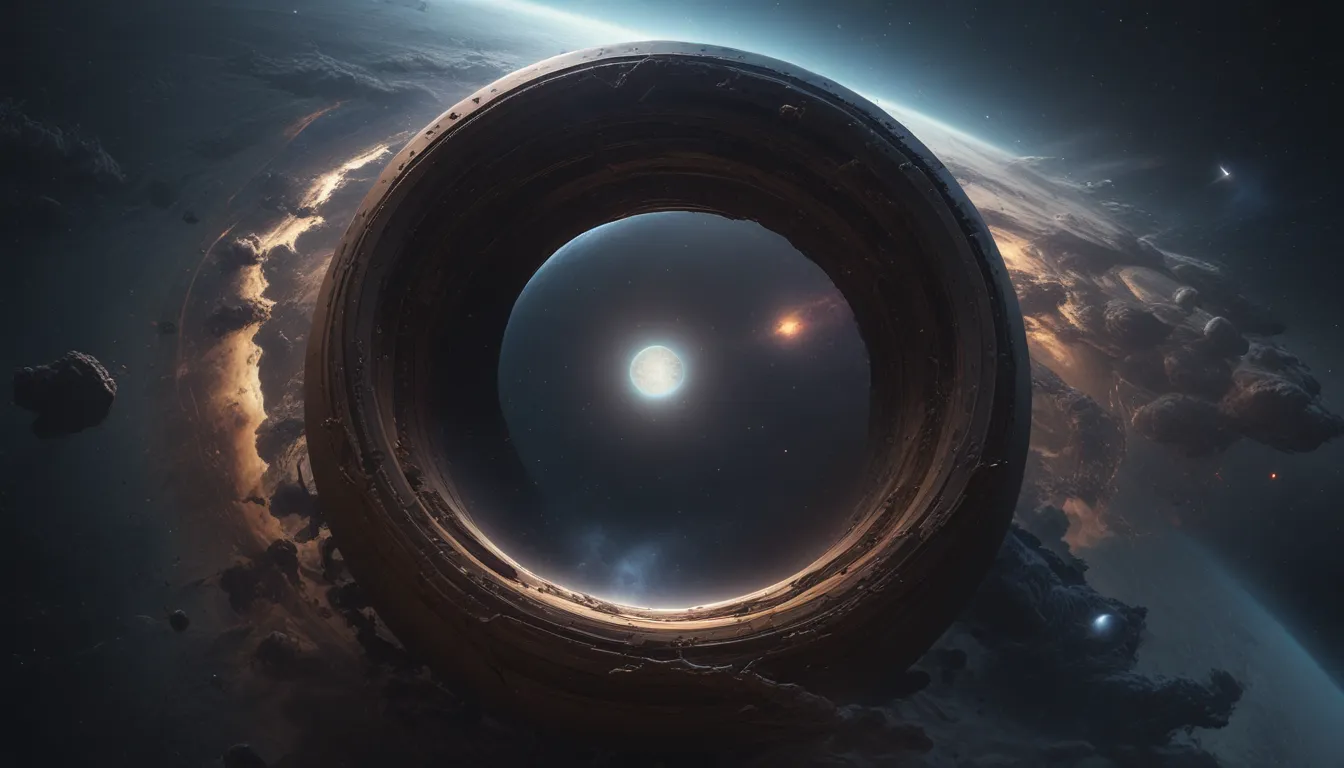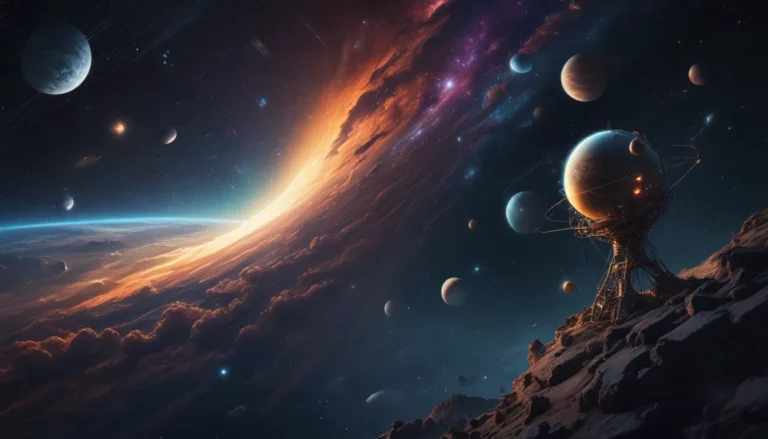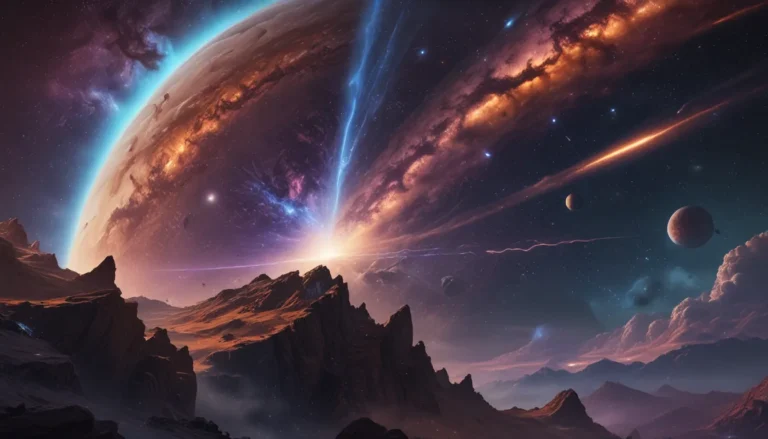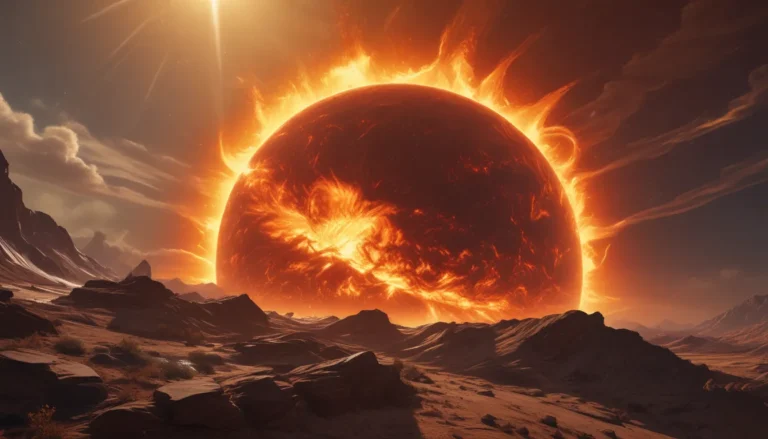The pictures we use in our articles might not show exactly what the words say. We choose these pictures to make you interested in reading more. The pictures work together with the words but don’t take their place. The words still tell you the important facts.
In the vast expanse of the universe, planetary rings stand out as captivating features that have intrigued scientists and space enthusiasts alike for centuries. These mesmerizing structures surrounding certain planets offer a glimpse into the sheer beauty and complexity of our galactic neighborhood. As we embark on a cosmic journey to unravel the secrets of planetary rings, we will explore 8 intriguing facts that will leave you in awe of the wonders of our universe.
Key Takeaways:
- Planetary rings aren’t just for Saturn! Other planets like Jupiter, Uranus, and Neptune also boast their ring systems, albeit less prominent.
- Planetary rings are akin to cosmic jewelry made of tiny particles, creating visually striking effects and offering insights into the formation of planets.
Planetary Rings: Beyond Saturn
While Saturn may be the most famous planet with its prominent ring system, it is important to note that Jupiter, Uranus, and Neptune also possess their own ring structures. These ring systems, though not as extensive or visible as Saturn’s, contribute to the celestial beauty of these planets.
The Composition of Planetary Rings
Composed of numerous small particles ranging in size from tiny grains of dust to larger moonlets, planetary rings are a fascinating blend of ice, rocks, and other debris. Their composition offers valuable clues about the processes that govern the formation and evolution of planets within our solar system.
Delicate Beauty: Thinness of Planetary Rings
Despite their apparent width, planetary rings are remarkably thin when compared to their overall size. Some rings can measure just a few meters or even a few centimeters in thickness, highlighting the delicate nature of these mesmerizing structures.
The Role of Gravity and Orbital Mechanics
The intricate shapes and structures of planetary rings are primarily shaped by the gravitational forces exerted by the parent planet and its moons. These forces play a crucial role in shaping the orbits of particles within the rings, leading to the formation of unique patterns and features.
Gaps and Divisions in Planetary Rings
Within certain planetary ring systems, observers can identify gaps or divisions that are a result of gravitational interactions between the planet and its moons. These interactions can create regions where particles are either cleared out or densely packed together, adding to the complexity and beauty of the ring system.
Phenomenal Displays: Beauty in Planetary Rings
The interaction of sunlight with the particles in planetary rings can result in breathtaking visual phenomena. From the scattering of light to the appearance of ring shadows, these celestial displays offer a glimpse into the dynamic and captivating nature of planetary rings.
Evolution and Persistence of Planetary Rings
While planetary ring systems can endure for millions or even billions of years, they are not static entities. Interactions with nearby moons, impacts from meteoroids, and electromagnetic forces can cause these ring systems to evolve and change over time, adding to their mystique and allure.
Insights into Planetary Formation
Studying planetary rings provides scientists with valuable insights into the early stages of planetary formation. By analyzing the composition, structure, and dynamics of these rings, researchers can gain a deeper understanding of the processes that have shaped our solar system and continue to shape planetary systems beyond our own.
Conclusion: Marvels of Planetary Rings Unveiled
Planetary rings, such as those found around Saturn, stand as mesmerizing celestial features that have captivated scientists and space enthusiasts for generations. Composed of a myriad of tiny particles orbiting in a flat disc-like shape, these rings offer a unique window into the complexity and beauty of our cosmic neighborhood.
As we continue to explore and study planetary rings, we uncover more about their origins, composition, and evolutionary paths. These rings not only provide us with valuable insights into the formation and dynamics of our solar system but also offer a glimpse into the larger processes that govern the creation and evolution of planets across the cosmos.
FAQs: Unveiling the Mysteries of Planetary Rings
- What causes the formation of planetary rings? The formation of planetary rings is believed to stem from the remnants of material that did not coalesce into moons or planets during the planet's formation.
- Are all planets in our solar system surrounded by rings? No, only the gas giants—Jupiter, Saturn, Uranus, and Neptune—boast prominent ring systems. The inner rocky planets lack visible ring structures.
- Can we see planetary rings from Earth? Yes, with the aid of telescopes, some planetary rings can be observed from Earth. Saturn's rings are particularly famous and easily visible even with small telescopes or binoculars.
- How do planetary rings influence the moons orbiting around them? Planetary rings can exert gravitational influences on moons, leading to changes in their orbits and even contributing to the formation of small moons from ring material.
- Are the compositions of planetary rings uniform across all planets? No, the composition of planetary rings varies depending on the host planet. For example, Saturn's rings are predominantly composed of ice particles, while the rings of Uranus and Neptune consist of darker materials such as dust and rocky debris.
- Are there missions dedicated to studying planetary rings? Several missions, including NASA's Cassini mission, have focused on studying planetary rings, providing valuable data and insights into their structure and dynamics.
- What is the lifespan of planetary rings? The lifespan of planetary rings can vary, with factors such as gravitational forces and collisions influencing their longevity. Their exact lifespan remains a subject of ongoing scientific research.
- Do other celestial bodies besides planets have rings? Yes, aside from planets, other celestial bodies like asteroids and dwarf planets, such as Chariklo and Haumea, have also been discovered to possess ring systems.
Planetary rings hold a special place in the tapestry of celestial wonders, inspiring awe and curiosity among those who gaze upon them. As we unravel the mysteries surrounding these captivating structures, we deepen our understanding of the processes that shape our solar system and beyond. The exploration of planetary rings promises an exhilarating journey of discovery, paving the way for new revelations about the boundless beauty and complexity of our cosmic neighborhood.






